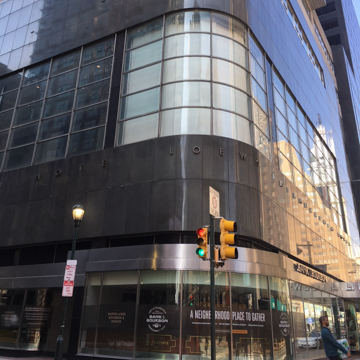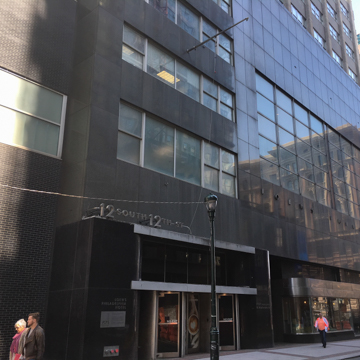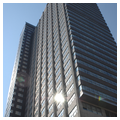You are here
Loew's Hotel
The choice of the site for PSFS's offices was investigated with scientific precision. The bank had remained at S. 7th and Walnut streets (1869, Addison Hutton; 1897–1898, Furness, Evans and Co.) while its competitors had moved west across Broad Street. To ascertain whether a 12th Street site would be commercially advantageous, the bank constructed a temporary facility from designs of Mellor, Meigs and Howe in 1927. When its proximity to the Reading Terminal and the City Hall proved effective, George Howe, who by then had dissolved his previous partnership, was commissioned to design the office tower with William Lescaze. Howe had worked in Frank Furness's office and learned its vigorous utilitarianism, an approach he later melded with the stark International Style modernism of Europe in the premier example of pre–World War II modern skyscraper design.
Ground-level shops, with stainless steel–framed windows, were to attract the impulse buyer, while the banking room and bank offices, differentiated by their sheathing in polished black stone and placed on the second story, were linked to the street by escalators on the Market Street front. The heroically cantilevered and offset office tower portion of the building is sheathed in light gray brick with limestone-clad piers that is juxtaposed with an expressionistic black brick service tower at the rear.
The banking room on the second level marked the shift from hand-carved and cast ornament of Victorian and Beaux-Arts design to sensuous materials, here glittering white, black, and yellow marbles. The architects
Writing Credits
If SAH Archipedia has been useful to you, please consider supporting it.
SAH Archipedia tells the story of the United States through its buildings, landscapes, and cities. This freely available resource empowers the public with authoritative knowledge that deepens their understanding and appreciation of the built environment. But the Society of Architectural Historians, which created SAH Archipedia with University of Virginia Press, needs your support to maintain the high-caliber research, writing, photography, cartography, editing, design, and programming that make SAH Archipedia a trusted online resource available to all who value the history of place, heritage tourism, and learning.




















